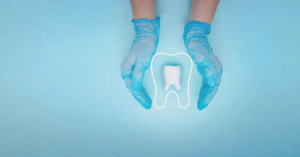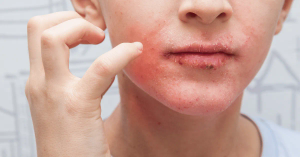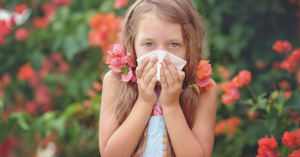While breast cancer is extremely rare in teenage girls, understanding its risk factors is essential for early awareness and prevention. Teen years are a critical time for breast development, and factors during this stage—such as genetics, diet, and environmental exposures—can influence breast health later in life.
Can Teen Girls Get Breast Cancer?
Breast cancer in teens is exceptionally rare, with very few cases reported annually. Most breast lumps or changes during adolescence are benign and linked to hormonal fluctuations or growth. However, building awareness about breast health during this stage can empower young girls to take preventive steps for their future.
Understanding Risk Factors for Breast Cancer in Teen Girls
Although the chances of breast cancer in teenagers are negligible, certain risk factors can increase their likelihood of developing it later in life.
1. Family History and Genetic Mutations
• A family history of breast cancer significantly increases risk, particularly if close relatives like a mother, sister, or grandmother were diagnosed.
• Mutations in genes such as BRCA1 or BRCA2 are key contributors to inherited breast cancer.
2. Early Onset of Menstruation
• Girls who begin menstruating before the age of 12 have longer lifetime exposure to estrogen, a hormone linked to breast cancer.
3. Exposure to Radiation
• Childhood or adolescent exposure to chest radiation, often used to treat other cancers, can increase the risk of breast cancer later.
4. Obesity and Poor Nutrition
• Being overweight during adolescence increases estrogen levels and inflammation, both of which are associated with breast cancer.
• Diets high in processed foods, sugar, and unhealthy fats contribute to poor overall health.
5. Sedentary Lifestyle
• Physical inactivity during adolescence can lead to obesity and other health issues that raise breast cancer risk.
6. Smoking and Alcohol Use
• Even low levels of alcohol consumption in teens have been associated with a higher risk of breast cancer due to hormonal effects.
• Smoking introduces carcinogenic chemicals that can damage DNA over time.
7. Environmental Toxins
• Endocrine-disrupting chemicals (EDCs), often found in plastics, pesticides, and personal care products, can interfere with hormonal balance and potentially increase cancer risk.
Symptoms to Watch for in Teens
Although breast cancer is unlikely in teenage girls, it’s crucial to monitor for unusual symptoms:
• Persistent lumps that do not fluctuate with the menstrual cycle.
• Changes in breast size, shape, or skin texture.
• Nipple discharge, pain, or redness.
• Skin dimpling or thickening.
These symptoms often indicate benign conditions but should always be evaluated by a healthcare professional.
Prevention Strategies for Breast Cancer in Teen Girls
Promoting healthy habits during adolescence is key to reducing breast cancer risk later in life.
1. Maintain a Balanced Diet
• Encourage a diet rich in whole foods, such as fruits, vegetables, whole grains, and lean proteins.
• Include foods high in antioxidants, like berries, nuts, and leafy greens, to protect cells from damage.
2. Stay Physically Active
• Regular exercise helps maintain a healthy weight and lowers lifetime estrogen exposure.
• Teens should aim for at least 60 minutes of moderate exercise daily, such as biking, dancing, or swimming.
3. Avoid Harmful Substances
• Educate teens on the risks of smoking and alcohol consumption. These habits not only harm general health but also increase breast cancer risk.
4. Limit Exposure to Toxins
• Reduce the use of plastics containing BPA and opt for glass or stainless steel containers.
• Choose personal care products that are free from harmful chemicals.
5. Learn About Family History
• If a strong family history of breast cancer exists, consult a healthcare provider or genetic counselor to assess risk and consider early interventions.
6. Promote Hormonal Health
• Encourage a stable lifestyle with minimal weight fluctuations and healthy stress management to support hormonal balance.
The Role of Education and Awareness
Raising awareness about breast health during the teen years can set the foundation for early detection and prevention in adulthood.
1. Teach Breast Health Basics
• While routine self-examinations are not typically necessary for teens, educating them about normal breast changes can help them recognize abnormalities.
2. Encourage Regular Check-Ups
• Routine pediatric visits provide opportunities for teens to discuss concerns about breast health with a trusted healthcare provider.
3. Foster Open Communication
• Parents should create a supportive environment where teens feel comfortable discussing their health.
What Parents Can Do to Help
Parents play a vital role in guiding their daughters toward healthy habits:
• Lead by example with balanced nutrition and regular exercise.
• Discuss the importance of avoiding smoking and alcohol in a non-judgmental way.
• Stay informed about family history and consult medical professionals when necessary.
Conclusion: Empowering Teens for Lifelong Breast Health
While breast cancer is rare in teens, understanding and addressing risk factors during adolescence can significantly reduce the risk later in life. By promoting healthy lifestyle habits, encouraging awareness, and fostering open communication, parents and teens can work together to build a strong foundation for lifelong breast health.









